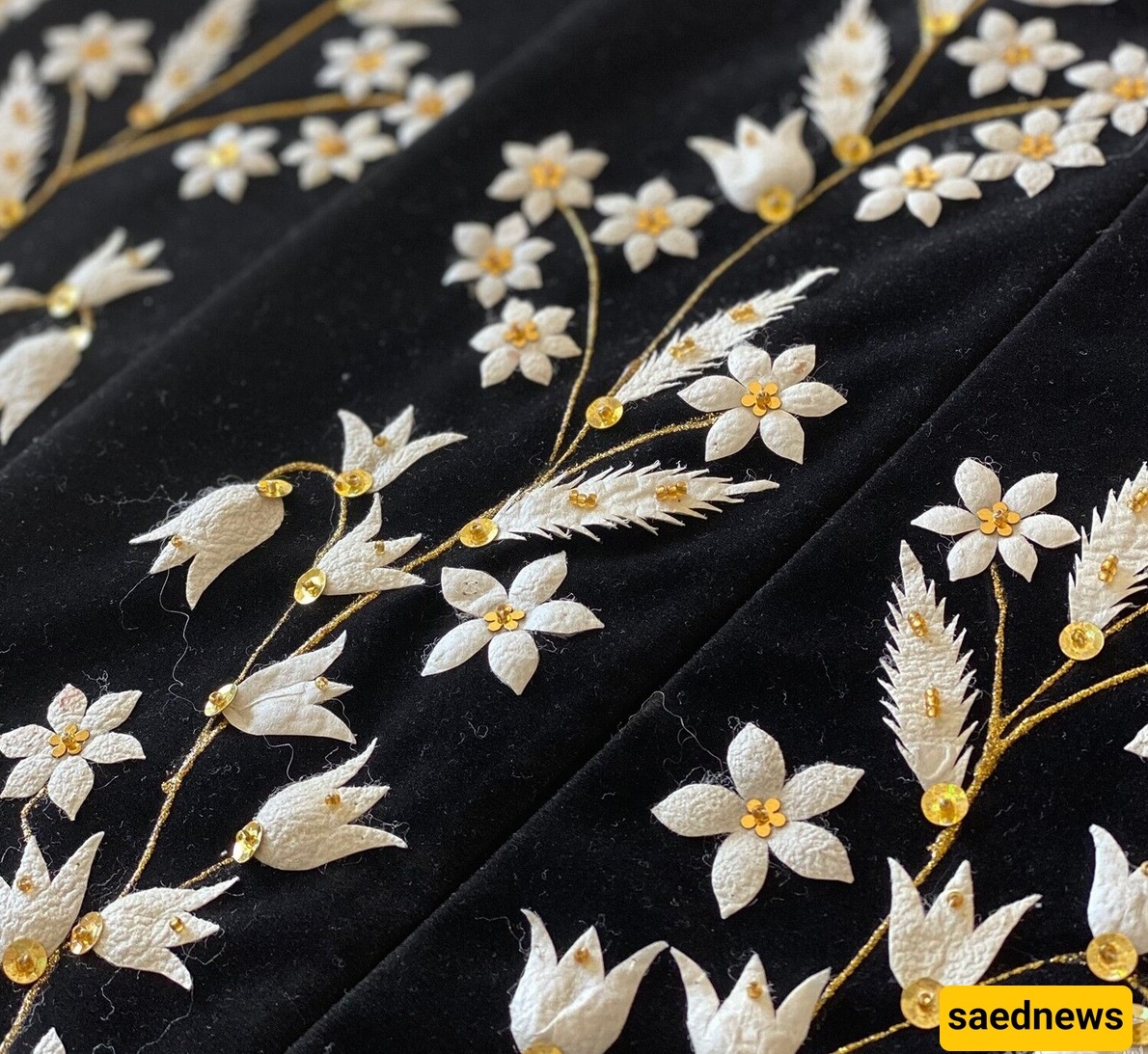SAEDNEWS: Peeleh embroidery is considered one of Iran’s beautiful and traditional forms of needlework. Join Saed News to explore and learn more about this exquisite art.

Pileh-douzi is an ancient Iranian embroidery technique, although its exact origins are not precisely documented. It is believed that this embroidery was practiced during the Parthian era alongside other decorative stitches. The technique gained significant attention during the Sassanian period. In the early Islamic era, particularly during the Seljuk and Mongol periods, it was observed on the curtains of the Kaaba and other wall hangings, indicating its popularity at the time.

Marco Polo, during the Mongol era, mentioned the prevalence of various decorative stitches, including pileh-douzi and zaghreh-douzi. Jean Chardin, in his travelogue, highlighted the special attention given to raised embroidery by Safavid rulers, describing it as an elegant and noteworthy technique. Surviving pieces in museums, especially the Hermitage and the Metropolitan Museum of Art in New York, demonstrate the grandeur of pileh-douzi during the Afshar, Zand, and Qajar periods. Unfortunately, this craft has lost much of its former prominence.
Introduction to Pileh-Douzi
Pileh-douzi is one of Iran’s traditional and visually striking embroidery techniques. It involves sewing halved silk cocoons onto fabric. The embroidery is raised and is often combined with other decorative stitches such as malileh-douzi (metal thread embroidery), sormeh-douzi (metallic thread embroidery), sequins, and beadwork. Pileh-douzi is used to embellish wall panels, tablecloths, garments, and other textiles. Common motifs include flowers, plants, and birds.
Materials for Pileh-Douzi
Fabric: Mostly velvet, mohair, or navy/black satin
Silk cocoons: Naturally colored or dyed
Metallic threads: Simple, diamond-patterned, gold, silver, or matte
Beads: Round, teardrop-shaped, or rice-shaped
Glue: Liquid cold adhesive
Thread: Strong sewing thread
Wadding (cotton or fiberglass): To create a raised effect
Sequins and beads (optional for embellishment)

Embroidery Technique
First, the silk cocoon is cut in half. The desired pattern is first drawn on paper and then transferred onto the cocoon.
The cocoon is gently opened in the middle to make it thinner.
A layer of wadding is placed underneath the cocoon for a raised effect.
The cocoon is then sewn onto the fabric following the pattern.
Additional decorative stitches using metallic threads, beads, or sequins enhance the embroidery’s visual appeal.
Important Notes:
When using metallic threads and beads, they should be placed carefully to complement the design without damaging it.
Common stitching techniques include stem stitch with metallic threads, closed stitches, and beadwork.
Applications and Centers of Pileh-Douzi
Existing pieces in museums in Iran and abroad—particularly the Hermitage and the Metropolitan Museum of Art—illustrate the splendor of pileh-douzi during the Afshar, Zand, and Qajar periods. Historically, major centers of pileh-douzi included Urmia, Tabriz, Isfahan, Kashan, Taft, Mehriz, Yazd, Rasht, and Tehran.
Today, the craft is less widespread, but it continues to be used for decorating panels, collars, and garment embellishments. Common motifs include birds, flowers, plants, and border designs.
Conclusion
Pileh-douzi remains an exquisite element of Iran’s rich textile heritage. Its historical and artistic value continues to attract attention in museums and among cultural enthusiasts, with cities such as Urmia, Isfahan, Kashan, Taft, Mehriz, Yazd, and Rasht recognized as traditional centers for this craft.

